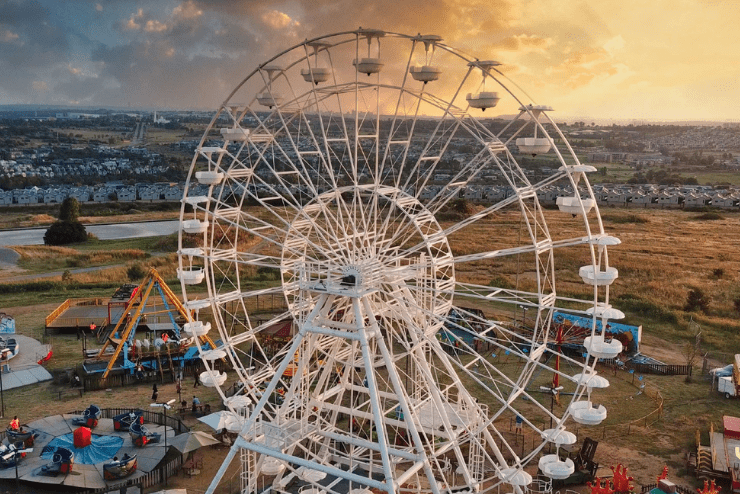Some Of Johannesburg North Attractions
Some Of Johannesburg North Attractions
Blog Article
Things about Johannesburg North Attractions
Table of ContentsHow Johannesburg North Attractions can Save You Time, Stress, and Money.The Johannesburg North Attractions DiariesThe Facts About Johannesburg North Attractions RevealedThe Facts About Johannesburg North Attractions RevealedThe Single Strategy To Use For Johannesburg North AttractionsTop Guidelines Of Johannesburg North AttractionsThe Ultimate Guide To Johannesburg North Attractions
You must keep safety in mind and travelers must stay alert at all times when in strange environments. Talk to the citizens when you are in community to discover the area you are remaining in. Johannesburg North attractions. When on the street (this doesn't put on buying malls and other safe environments) finest general suggestions is to attempt your ideal to resemble a local and to avoid presenting any type of form of wealth
Johannesburg North Attractions Things To Know Before You Buy
Professor Revil Mason O. J. (Thomson, 1946) checked out the Witwatersrand's pre-colonial background. His archaeological work exploded the 'em pty land' myth, according to which the area was empty of human habitation before the arrival of European settlers. In his magazines Prehistory of the Transvaal: A Document of Human Activity (1962) and Origins of Black People of Johannesburg and the Southern Western Central Transvaal AD 3501880 (1986 ), Professor Mason demonstrated the degree of social and economic development in the area before Europeans set foot right here.

Rumored Buzz on Johannesburg North Attractions
In 1878, David Wardrop discovered gold in quartz blood vessels at Zwartkop, north of Krugersdorp. In 1881, Stephanus Minnaar came across gold on the farm Kromdraai, near the Cradle of Mankind.
In March 1886, a protrusion (quickly to be called the Main Coral reef) was located, quite luckily, on Gerhardus Oosthuizen's ranch Langlaagte. Some claim that the Lancastrian coal miner George Walker uncovered this reef. An additional itinerant English prospector, George Harrison (who had actually formerly functioned in Australian mines) obtained a prospecting licence in respect of Langlaagte in May 1886.
He determined to proceed in a quest for greener pastures, and disposed of his Langlaagte insurance claim for the baronial amount of 10. Alas: under lay the wealthiest goldfield ever before located. The discovery of this rich auriferous reef prompted a gold thrill that indicated the end of agrarian serenity in the southerly Transvaal.
It would, within six years, end up being the largest community in southern Africa. Within a decade, it would make the Z. A. R. till then an anarchical and bankrupt little state the richest nation in Africa. By the millenium, the Z. A. R. was to surpass Russia, Australia and the United States of America to come to be the globe's leading gold manufacturer, creating even more than a quarter of the globe's gold.
The Only Guide to Johannesburg North Attractions
It was recognized as Ferreira's Camp, named after Colonel Ignatius Ferreira. He was a Boer adventurer upon whom the British authorities had presented the condition of Buddy of one of the most Identified Order of St Michael and St George (entitling him to the post-nominal letters C. M. G.) in gratitude for his duty in the war that had actually deposed the Pedi king Sekhukhune in 1879.
Two other camps were developed: Meyer's Camp on the farm Doornfontein, and Paarl Camp. The latter was nicknamed Afrikander Camp; several individuals from the Cape Colony cleared up there.

Some Known Factual Statements About Johannesburg North Attractions
This name acquired money by word of mouth, such that the State Secretary attested the article name to the Mining Commissioner on 9 October 1886. Stands in the village were auctioned on 8 December 1886. While some stands were marketed for 10, others were knocked down for as little as sixpence.
Two years later on, these erven were to transform hands for as long as 750 each. The tented camps dwindled as a dorp of corrugated iron structures developed and increased north of the mines situated along the Key Reef Roadway. Areas such as Jeppe's Town (where working-class immigrants erected their dwellings) and Doornfontein (where the upscale new 'Randlords' began to construct their luxurious residences) were quickly added to the ever-expanding map of the town.
Johannesburg North Attractions Fundamentals Explained
In addition to the street names, there were no indicators of Johannesburg being situated in a Dutch-speaking country. Several years later, C. W. Kearns O. J. (one of the very first boys signed up at St John's University in 1898) would remember: 'A weird fact regarding Johannesburg was that, although it remained in the [Boer Republic], nearly everyone talked English and also the Government servants resolved one in English, unless they were initial addressed in the Taal (or Low Dutch)'.
Because of this, Britain had a passion in guaranteeing ideal problems for gold production on the Witwatersrand, which the gold was exported to London instead than Berlin a necessary provided all the his explanation extra clamant by the Z. A. R - Johannesburg North attractions.'s increasing toenadering with Germany. Mine owners were on a clash with President Kruger, whose plan of monopolistic giving ins (usually provided to his cronies) stopped mining business from obtaining materials of products (specifically dynamite) and work on their very own, more affordable terms
Things about Johannesburg North Attractions
In 1890, the Volksraad had actually restricted the franchise business to white guys that had stayed in the Z. A. R. for fourteen years or longer, therefore invalidating the majority of the immigrants (that happened to be the significant contributors important source to the fiscus). Nonetheless, frustration for the vote was a simple pretext for advertising a various agenda; most uitlanders concerned themselves as temporary site visitors and had no intention of staying in the Z.
Report this page